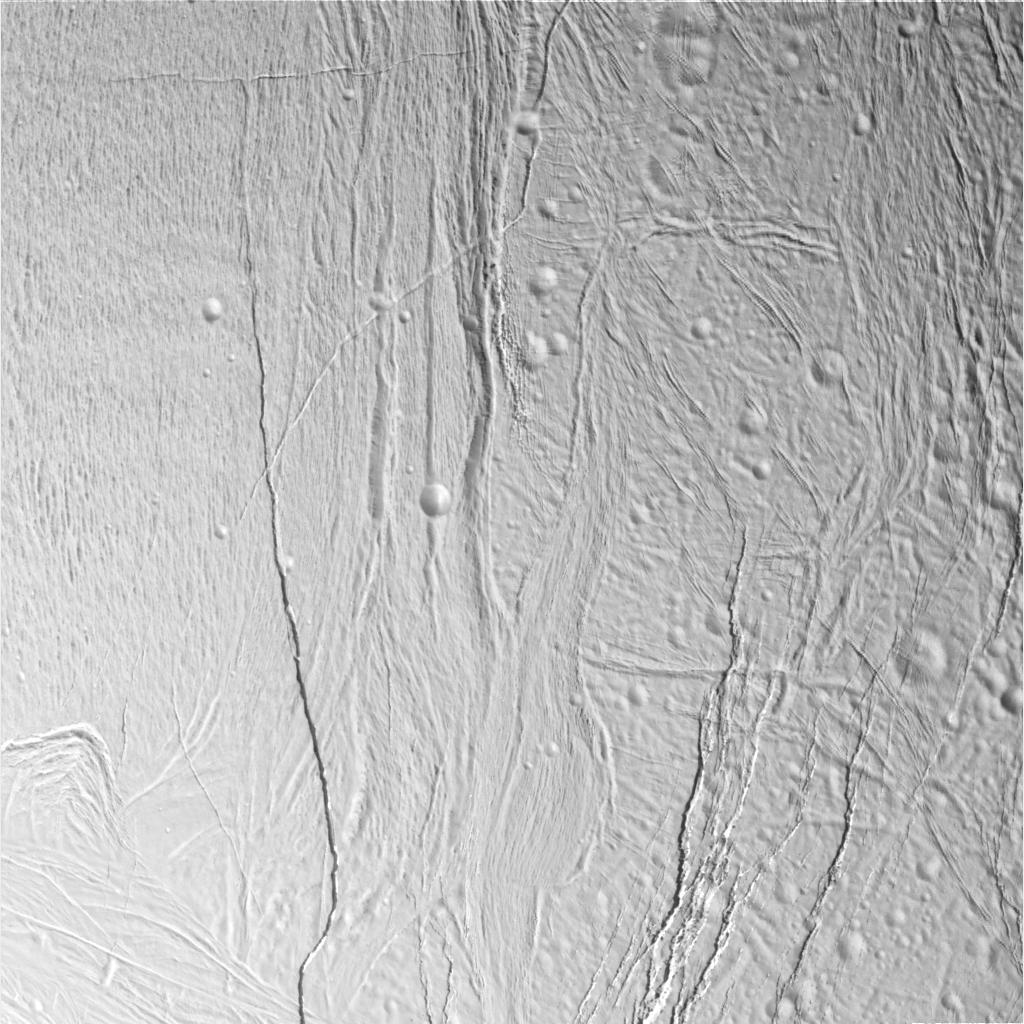Stressed-out Enceladus

| PIA Number | PIA06213 |
|---|---|
| Language |
|
This image of Saturn's moon Enceladus shows a region of craters softened by time and torn apart by tectonic stresses. Fractures 100 to 400 meters (330 to 1,300 feet) in width crosscut the terrain: One set trends northeast-southwest and another trends northwest-southeast. North is up. A region of "grooved terrain" is visible on the left. A broad canyon, its floor partly concealed by shadow, is notable on the right.
The image was taken in visible light with Cassini's narrow-angle camera from a distance of about 25,700 kilometers (16,000 miles, red-colored image) and from Enceladus and at a Sun-Enceladus-spacecraft, or phase, angle of 46 degrees. Pixel scale is 150 meters (490 feet) per pixel. The image has been contrast-enhanced to aid visibility.
A stereo anaglyph version of the scene is also available (see Stressed-out Enceladus (3-D)).
The Cassini-Huygens mission is a cooperative project of NASA, the European Space Agency and the Italian Space Agency. The Jet Propulsion Laboratory, a division of the California Institute of Technology in Pasadena, manages the mission for NASA's Science Mission Directorate, Washington, D.C. The Cassini orbiter and its two onboard cameras were designed, developed and assembled at JPL. The imaging team is based at the Space Science Institute, Boulder, Colo.
For more information about the Cassini-Huygens mission visit http://saturn.jpl.nasa.gov . For additional images visit the Cassini imaging team homepage http://ciclops.org .
Credit: NASA/JPL/Space Science Institute
